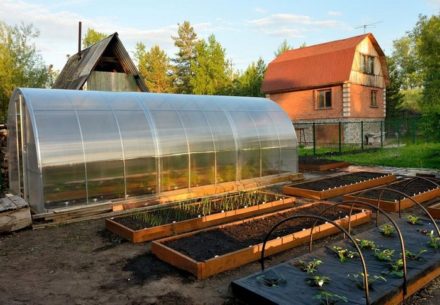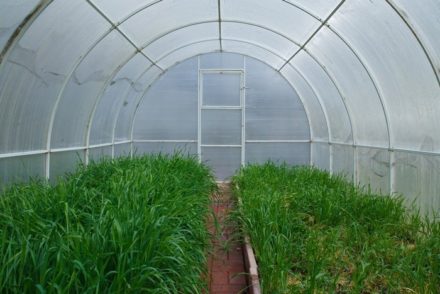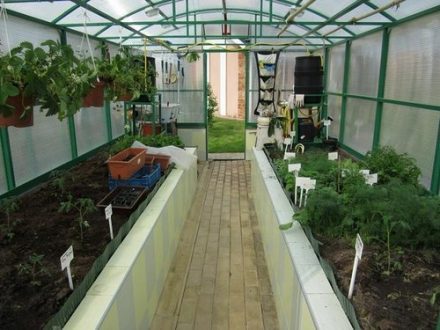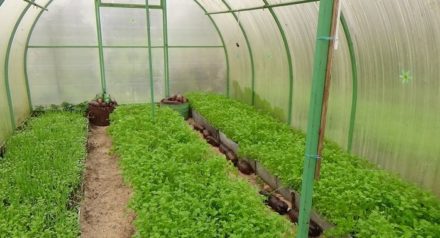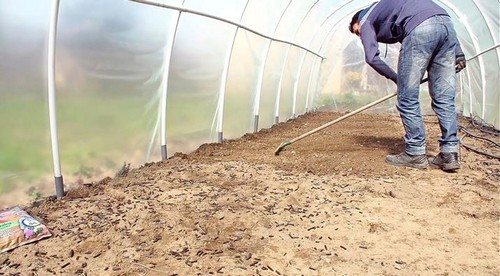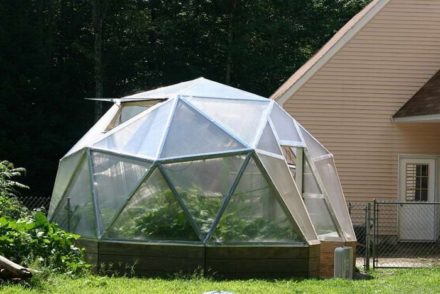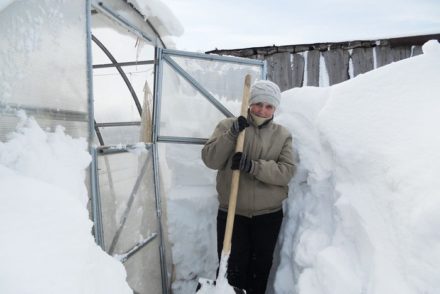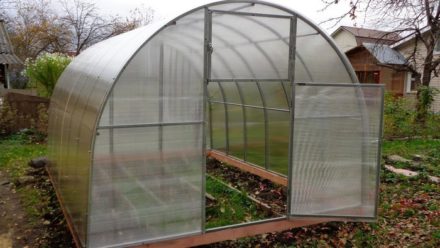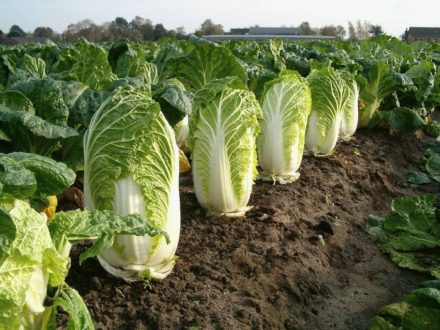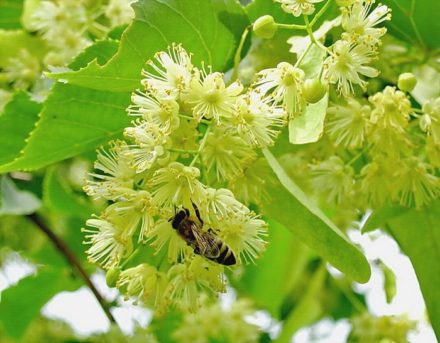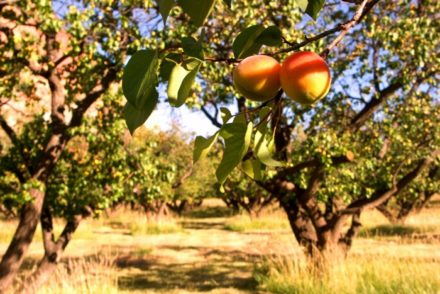Greens and vegetables can be planted in a greenhouse 2–3 weeks earlier than in open ground. To make more efficient use of closed space, summer residents pre-sow cold-resistant crops for which the full growing season takes 2 months or less. After harvesting, the main planting of tomatoes, cucumbers, and peppers is carried out.
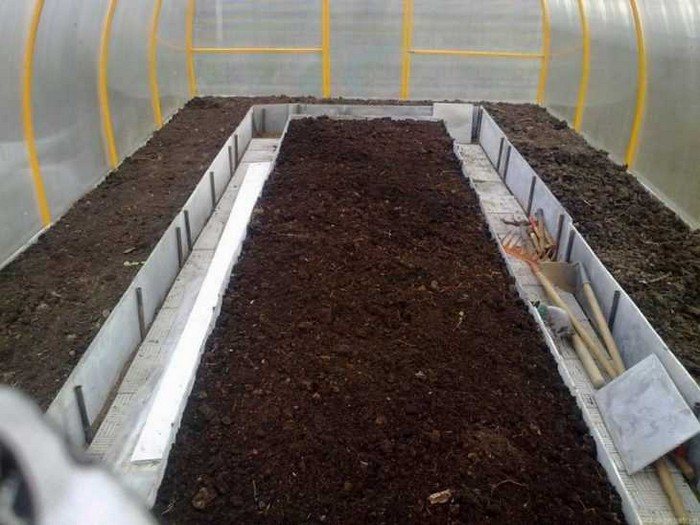
Dill
Early ripening varieties of dill are suitable for early planting in a greenhouse. It is better to choose bush varieties. Among domestic varieties these are:
- "Carousel";
- "Grenadier";
- "Amazon";
- "Kibray";
- "Redoubt";
- "Diamond";
- "Frost".
Sowing is carried out after the temperature in the greenhouse reaches +15 °C. It is not necessary to plant dill directly in the ground; the greens can be sown in boxes installed inside the greenhouse. To improve germination, seeds are pre-soaked in hot water for 2-3 days. The water is changed from time to time. To speed up the appearance of sprouts, the seeds can be additionally germinated by wrapping them in a damp cloth and plastic wrap.
Before planting, make grooves in the ground at intervals of 15–20 cm and spill them with warm water. The soil must be fertilized in advance with a mixture of mineral fertilizers (potassium salt, urea, superphosphate in equal proportions). The seeds are placed at a depth of 3–4 cm and sprinkled with a thin layer of soil. Then the crops are sprayed with a sprayer.
During the first 2 weeks after planting dill, special attention is paid to soil moisture. The earth should not dry out. When the seedlings rise to a height of 10 cm, the dill is thinned out. The pulled greens can be used for the table or transplanted to another place. The dill harvest ripens in a greenhouse in the spring in 2 months.
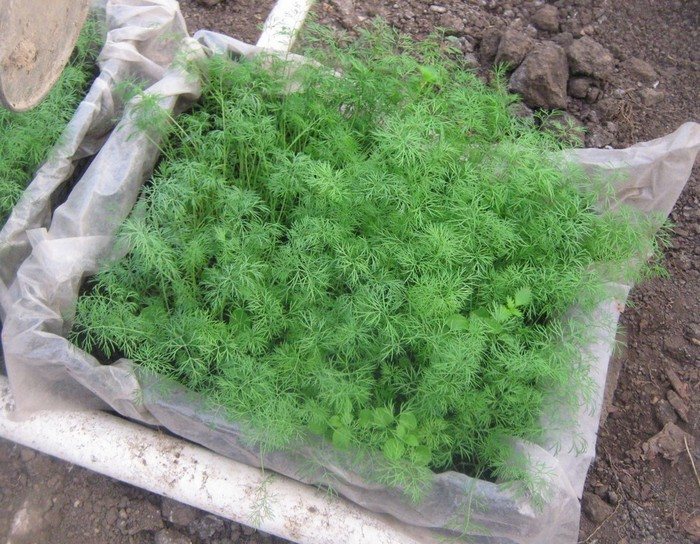
Radish
Radishes are characterized by cold resistance, unpretentiousness, and early emergence of seedlings. The following varieties are suitable for spring cultivation in a greenhouse:
- "Mokhovsky";
- "Camelot";
- "Ruby";
- "Heat";
- "Dawn".
The listed varieties produce a harvest 40 days after germination. Granulated seeds can be planted without preparation. To begin with, ordinary seed is soaked in a weak solution of potassium permanganate. You can let the seeds hatch so that seedlings appear faster. Sowing in the greenhouse is carried out when daytime temperatures reach 19 °C, and night temperatures reach 8–9 °C. Usually early planting is carried out in April.
Radishes love loose soil with a neutral reaction. The beds are prepared 2 weeks before sowing. The soil is first enriched by pouring a solution of nitroammophoska (1 tsp per bucket of water). To warm the soil a week before sowing, you need to cover it with film.
The furrows are cut at intervals of 15 cm. A distance of 5 cm should be maintained between changes. Thinning is not recommended for this crop, since radishes have sensitive roots. The crops are sprinkled with earth and lightly compacted. It is advisable to cover the radishes with film at night. The appearance of seedlings does not take long - only 3-4 days. Plantings require regular watering, moisture should penetrate to a depth of 15 cm.
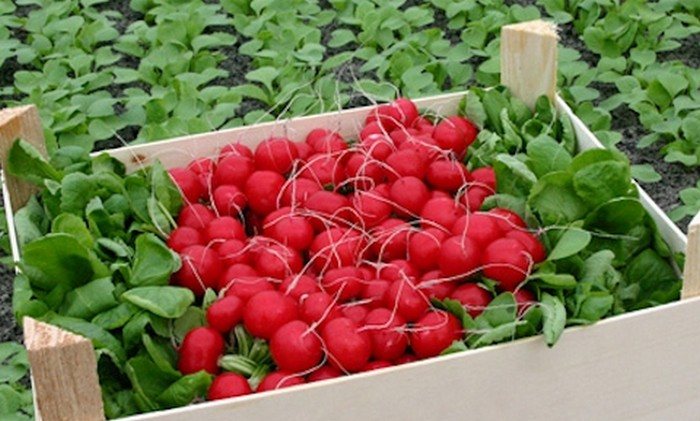
Leaf lettuce and watercress
In an unheated greenhouse, lettuce is sown from mid-March to the end of April. The sowing period depends on the region. The following varieties are suitable for greenhouse cultivation:
- "Moscow Greenhouse";
- "Emerald Lace";
- "Parliament".
The soil is dug up beforehand, adding 15 g of potassium chloride and 40 g of superphosphate per square meter. Fertilizer is applied in the fall or 2 weeks before planting. Furrows are cut in the bed at a distance of 10 cm from each other. The seed planting depth is 1–2 cm. The crops are sprinkled with dry soil on top and then watered. To protect against night frosts, the bed is mulched with fine humus.
The emerging shoots require thinning, leaving a gap of 15-20 cm between the plants. Care includes abundant but rare watering, weeding, and fertilizing. The harvest of leafy salads can be obtained as early as 22 days after planting. Watercress is grown in a greenhouse according to the same principle.
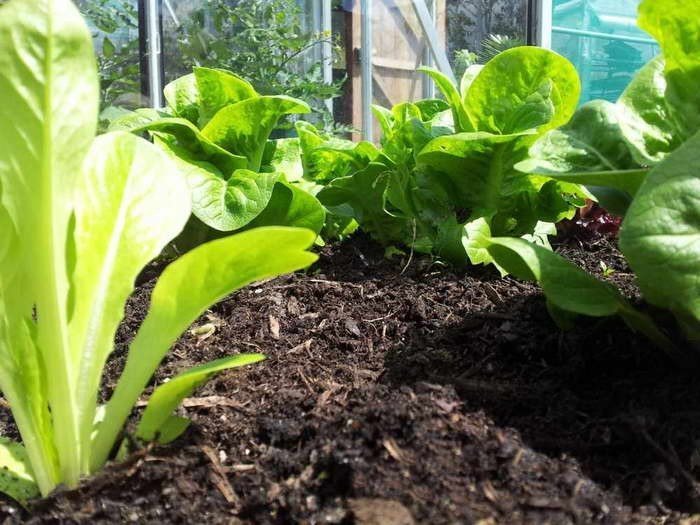
Chinese cabbage
Leafy varieties of Chinese cabbage are the earliest, they yield a harvest in 45-50 days. Ultra-early varieties are suitable for growing in a greenhouse in spring:
- "Spring Jade";
- "Spring Beauty";
- "Manoko F1";
- "Champion";
- "Khibiny";
- "Yuki F1".
Soil cultivation is carried out a week before sowing seeds. The soil is loosened, then organic matter or mineral fertilizers are added. Chinese cabbage likes light and nutritious soil. In heated greenhouses, sowing can be done in March, for unheated buildings, the dates are shifted forward by a month. Furrows are cut at a distance of 30-40 cm from each other, the planting depth is 1-1.5 cm.Subsequently, the seedlings are thinned out, leaving an interval of 30-40 cm between them.
To obtain an earlier harvest, Chinese cabbage is grown in a greenhouse using seedlings. The culture needs at least 10 hours of daylight. During the growing season, fertilizers are applied to the plants twice. To prepare a nutrient solution, use an infusion of mullein, chicken droppings or mowed grass. Watering should be regular and even.
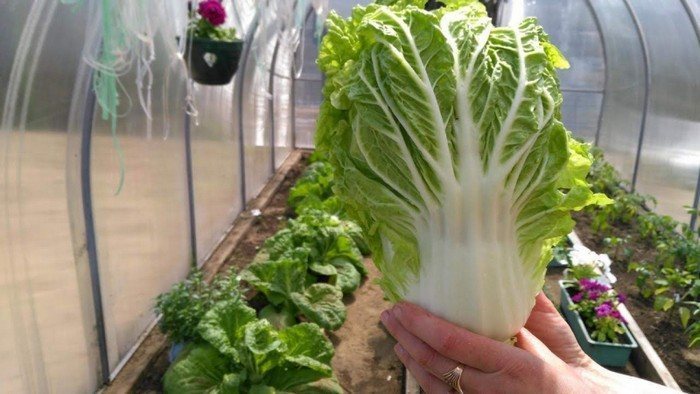
In addition to the crops listed, you can sow mustard greens, spinach, arugula, cilantro, borage, turnip greens, and Japanese cabbage in the greenhouse in early spring. Early vegetables and greens will saturate the body, which has become weakened during the winter, with vitamins and minerals and make the diet varied.


